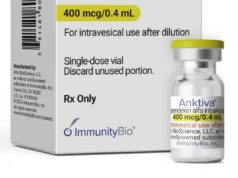
Vector flat blood laboratory icon illustration. Magnifier glass zoom blood drop cell. Concept of DNA, HIV diagnosis lab. Design element for poster, flyer, card, banner, ui
Covid-19 patients with co-infections suffer longer hospital stays and increased mortality.
Secondary infections with bacterial and viral pathogens are well described in influenza, SARS, MERS and other respiratory viral illnesses, while data in Covid-19 patients is still emerging. Concurrent infections with two or more pathogens are referred to as co-infection and can result in more severe disease and higher mortality.
During the Spanish influenza pandemic of 1918, most deaths were thought to be due to bacterial pneumonia rather than the H1N1 virus itself. This phenomenon was also observed during the 1957, 1968, and 2009 influenza pandemics. During the 2009 swine flu pandemic, bacterial infections were associated with 29% to 55% of deaths.
A recent meta-analysis of 27 studies, including 3,214 patients investigating influenza, demonstrated that bacterial co-infection rates ranged from 11% to 35%. The most common pathogens identified were Streptococcus pneumoniae and Staphylococcus aureus, accounting for 35% and 28% of infections, respectively, with a wide range of other pathogens causing the remaining infections.
Co-infections are also common in patients with Covid-19, being associated with a 3.3-fold higher risk of death. One meta-analysis of 7,100 patients identified acute bacterial co-infections in 4.9%, despite 71.9% of patients receiving antibiotics. In another meta-analysis of 118 studies, the pooled prevalence of co-infections was 19%. Co-infections were caused more often by bacterial (6.9%) than viral and fungal pathogens. The authors concluded that better diagnostic testing is necessary to identify and treat respiratory co-infections among patients with Covid-19.
Covid-19 patients are at higher risk for multi-drug resistant pathogens
Reports from Southeast Asia and Europe in critically ill Covid-19 patients suggest higher frequency of infections with multi-drug resistant organisms such as carbapenem-resistant Acinetobacter baumannii and carbapenemase-producing Klebsiella pneumoniae. Overall, a variety of multi-drug resistant organisms have been cultured from Covid-19 patients around the globe at various rates includes Klebsiella pneumoniae, Pseudomonas aeruginosa, Serratia marcescens, Enterobacter cloacae, Acinetobacter baumannii, Escherichia coli, and Staphylococcus aureus.
The diagnostic challenge with respiratory tract infections
The etiology of respiratory tract infections often remains elusive, even with maximum diagnostic effort. The CDC EPIC study team conducted landmark trials of 2,250 adults and 2,222 children with community-acquired pneumonia (CAP). Pathogens were detected in only 38% of adult and 81% of pediatric patients, despite extensive diagnostic workup including culture, multiplex PCR, and urine antigen testing, highlighting the need for novel testing approaches to increase diagnostic yield.
Invasive diagnostic procedures such as bronchoscopy that allow testing of specimens from the lower airways (the site of infection) and imaging studies such as CT scans complement routine laboratory testing but expose healthcare providers to airborne pathogens and have been discouraged in patients with Covid-19. This limits diagnostic options further and can reduce the yield of diagnostic testing.
Metagenomics can identify co-infections, including in patients with Covid-19
Metagenomics offers advances for infectious disease diagnostics by providing the diagnostic technology to detect a potentially unlimited numbers of known and novel microbes from a single sample in one test. One of several studies demonstrated that metagenomic sequencing of nasopharyngeal swabs can not only detect whole SARS-CoV-2 genomes and emerging mutations/variants, but also identified co-infections with human parainfluenza virus 3, Moraxella species and other organisms more readily than traditional approaches. In addition, metagenomics identified candidate etiologies in SARS-CoV-2 PCR-negative samples when otherwise the cause of the patient’s symptoms would remain unknown.
In addition to detecting hundreds to thousands of pathogens, one commercially available metagenomics assay also offers comprehensive detection of >2,100 antimicrobial resistance (AMR) markers within 24 hours. This testing, called precision metagenomics, is a type of metagenomic next-generation sequencing (mNGS) that is very broad, much like shotgun metagenomics, and is amendable to all pathogen types in a single test. Additionally, with Precision Metagenomics in comparison to shotgun testing, it requires only modest depth because of the enrichment step that more effectively removes host background, allowing the results to be both extremely sensitive and specific. Importantly, compared to shotgun metagenomics, Precision Metagenomics can provide insights to a very broad range of AMR markers reliably, a more rapid hands-on turn-around time, at a more cost-effective price point.
These results demonstrate the value of metagenomics for identification of pathogens that would otherwise evade detection, including co-infections that can put patients with Covid-19 at increased risk for adverse outcomes. By profiling circulating viral strains, routine metagenomics-based broad and rapid pathogen detection and AMR profiling can also assist in real-time monitoring of circulating viral strains and preparation for and early identification of future viral pandemics.
In conclusion, there is much we are still learning from the Covid-19 pandemic, and the role of improved diagnostic yield and antimicrobial resistance detection for co-infections is paramount.
Photo: Anastasia Usenko, Getty Images








